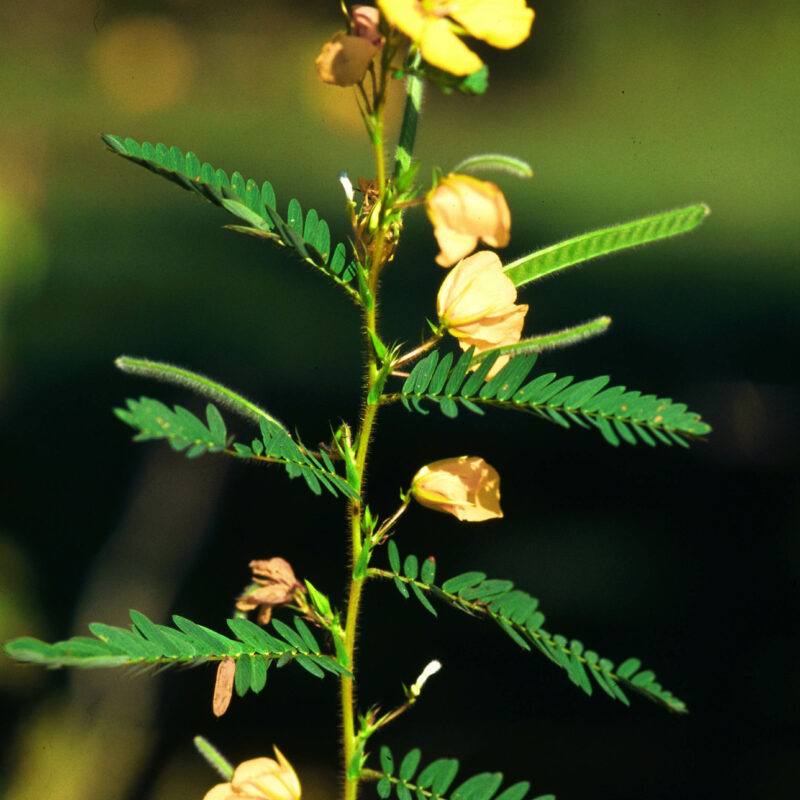Partridge PeaChamaecrista fasciculata
Partridge Pea is a pioneer species good for disturbed sites and restorations, holding the soil and preventing weeds until deeper-rooted perennials take over. A favorite of bees and other pollinators.
USDA symbol: CHFA2
General Information
| Plant Type | Forb |
|---|---|
| Height | 1 to 2 feet |
| Light Exposure | Sun, Part Sun |
| Soil Moisture | Dry |
| Bloom Color | Yellow |

Tolerances
| Flooding / Inundation Tolerance | Low |
|---|---|
| General Resilience | 5 |
| Salt Tolerance | Low |
| Stress Tolerance | Drought Tolerant |
Pollinator Value: Very High
| Bloom Months | July to September |
|---|---|
| Pollinator Benefit | Insect Pollinated, Supports Generalists |
Project Planning
| Project Type | Boulevard, Erosion Control |
|---|---|
| Coefficient of Conservatism | 6 |
| Herbivore Sensitivity | High |
| Lifespan | Annual |
| Rate of Spread | Fast |
| Soil Stabilization | Deep |
| Vegetative Reproduction | Absent |
Range
| County | Anoka, Blue Earth, Brown, Cottonwood, Dakota, Fillmore, Goodhue, Hennepin, Houston, Jackson, Nicollet, Ramsey, Redwood, Renville, Rock, Wabasha, Wadena, Waseca, Washington, Watonwan, Winona, Yellow Medicine |
|---|---|
| Ecoregion | Driftless Area, North Central Hardwood Forests, Northern Glaciated Plains, Western Cornbelt Plains |
| Approximate Eco Province | Eastern Broadleaf Forest, Prairie Parkland |
